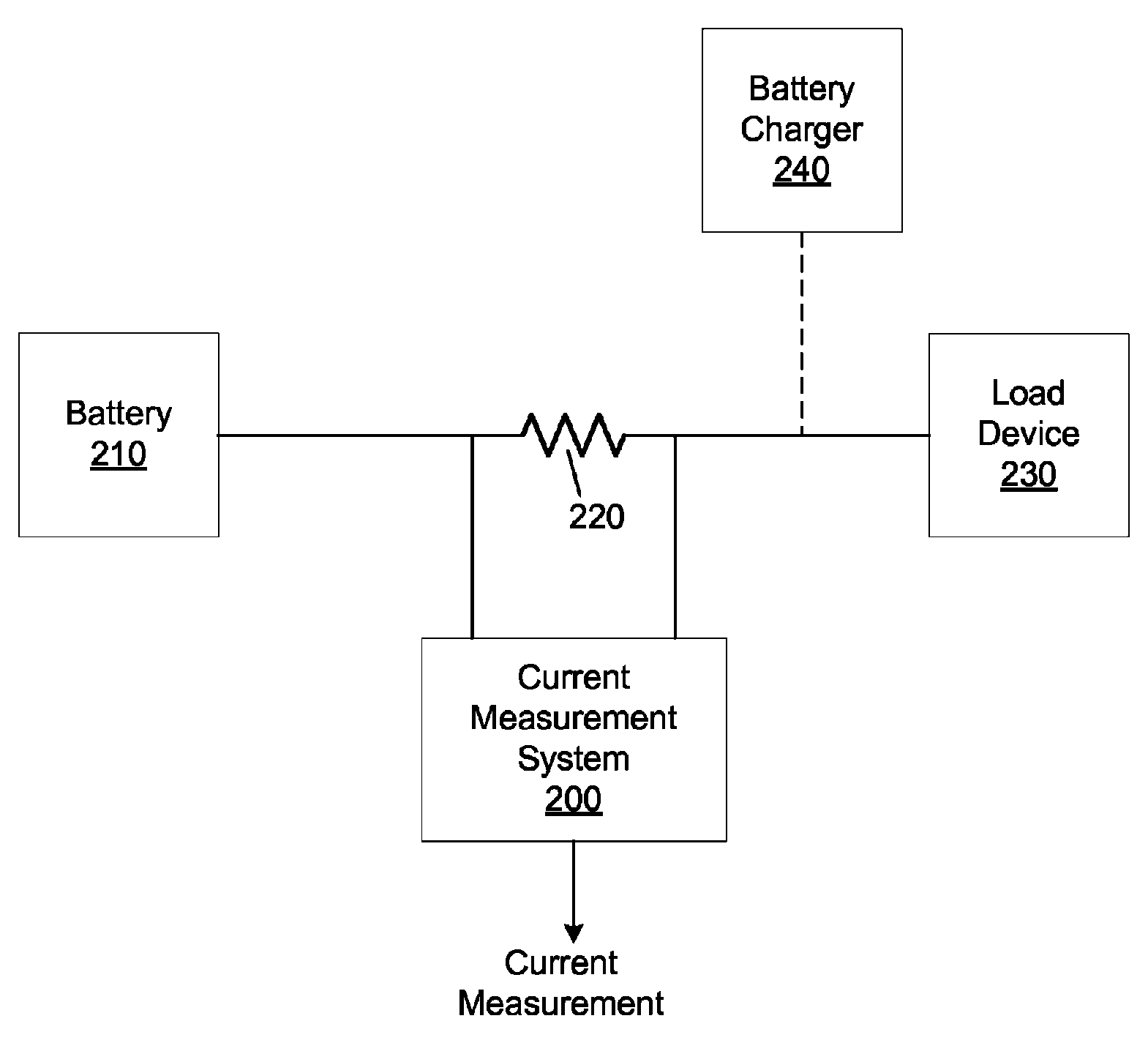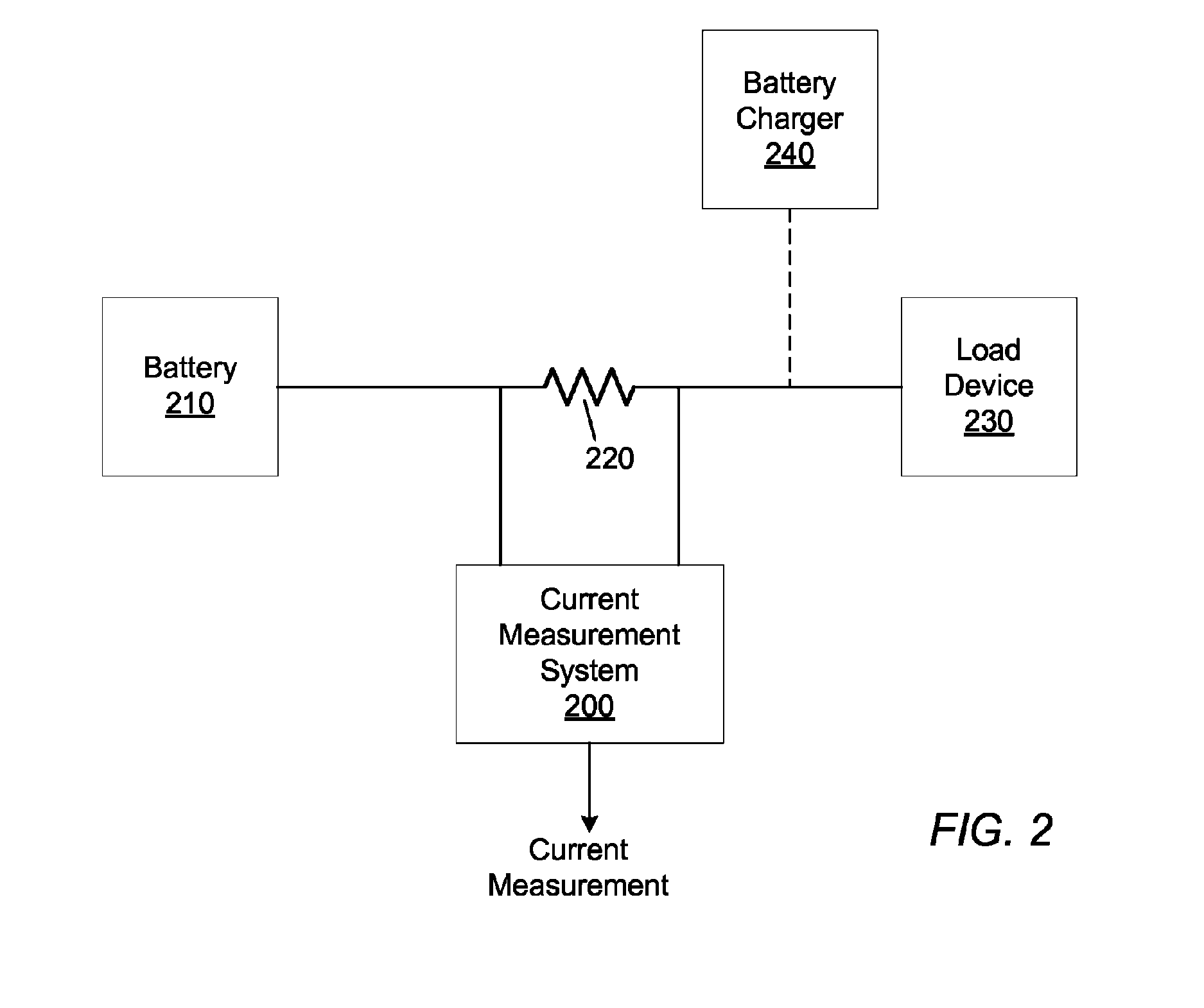Bi-directional high side current sense measurement
a high-current sense, bi-directional technology, applied in the direction of resistance/reactance/impedence, instruments, fault locations, etc., can solve the problem that presence makes the measurement less accura
- Summary
- Abstract
- Description
- Claims
- Application Information
AI Technical Summary
Benefits of technology
Problems solved by technology
Method used
Image
Examples
embodiment 400
[0050]FIG. 4 shows an embodiment 400 of ADC 310 in terms of a delta-sigma topology. However, other ADC topologies may be used as well.
[0051]ADC embodiment 400 includes circuit 410, an integrator 415, a comparator 420, a counter 425 and a feedback unit 430.
[0052]The circuit 410 operates on the voltage drop Vsense(t) and a feedback signal VF(t) to generate a difference signal Vdiff(t) according to the expression:
Vdiff(t)=Vsense(t)−VF(t). (1)
[0053]In some embodiments, circuit 410 also receives a voltage offset Voffset, in which case the difference signal Vdiff(t) is generated according to the expression:
Vdiff(t)=Vsense(t)−VF(t)+Voffset. (2)
[0054]Integrator 415 continuously integrates the difference signal to generate an intermediate signal Y(t).
[0055]Comparator 420 operates on the intermediate signal Y(t) to generate a digital output signal (dout) that indicates whether the intermediate signal is positive or negative at each active edge of a clock signal. (The active edges may be the...
embodiment 300
[0115]FIG. 12 shows an alternative embodiment 300′ for the system of FIG. 3. The alternative embodiment 300′ includes resistors R1 and R2 coupled, respectively, between the ends of the sense resistor RSENSE and the inputs of the ADC 310. The resistors R1 and R2 may serve to limit the bandwidth of the Vsense signal. Furthermore, the resistors R1 and R2 may provide a measure of protection from electrostatic discharge (ESD) events. Resistors R1 and R2 are preferably equal (or approximately equal) in resistance. A similar alternative embodiment is contemplated for the system of FIG. 7, i.e., where resistors R1 and R2 couple, respectively, between the ends of the sense resistor and the inputs of front end 710.
PUM
 Login to View More
Login to View More Abstract
Description
Claims
Application Information
 Login to View More
Login to View More - R&D
- Intellectual Property
- Life Sciences
- Materials
- Tech Scout
- Unparalleled Data Quality
- Higher Quality Content
- 60% Fewer Hallucinations
Browse by: Latest US Patents, China's latest patents, Technical Efficacy Thesaurus, Application Domain, Technology Topic, Popular Technical Reports.
© 2025 PatSnap. All rights reserved.Legal|Privacy policy|Modern Slavery Act Transparency Statement|Sitemap|About US| Contact US: help@patsnap.com



